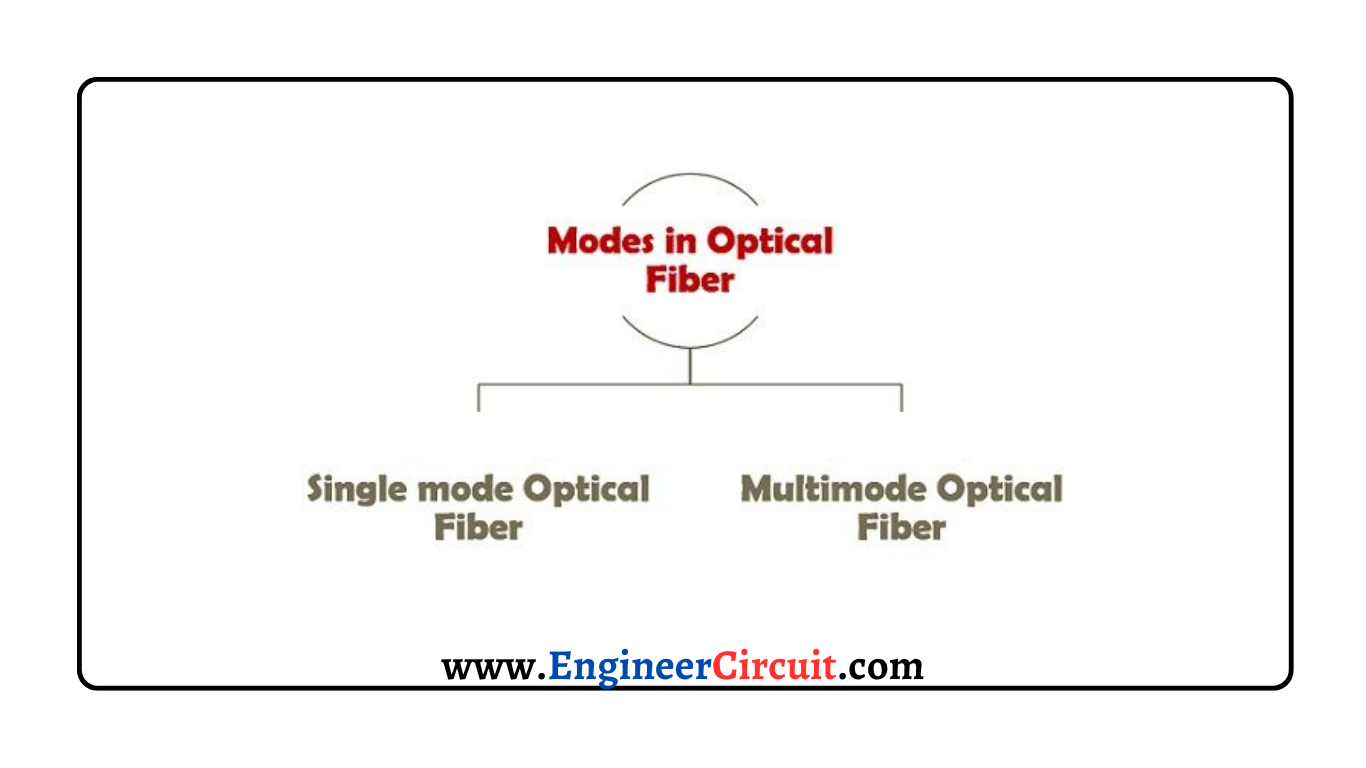The Comprehensive Guide to Fiber Optic Transmission
An optical fiber transmits optical (light) signals and consists of a thin, flexible strand made of glass (silica) or plastic. The diameter of the optical fiber is usually larger than that of a human hair. It functions as a waveguide, allowing the transmission of electromagnetic waves at optical frequencies.
Structure of optical fiber
The structure of an optical fiber comprises a core and cladding. The core, composed of glass, facilitates light propagation and is enclosed by a plastic cladding. An elastic jacket surrounds the entire assembly to protect the fiber. The figure below shows the structure of an optical fiber:

Propagation of light ray through an Optical Fiber
Light propagates through an optical fiber through the phenomenon of total internal reflection. It travels through the core, experiencing continuous reflections from the cladding. These reflections occur due to the incident angle being greater than the critical angle, resulting in successive reflections rather than refraction at the cladding.
Modes of Propagation in an optical fiber
Modes of propagation in an optical fiber refer to the paths taken by light during transmission.
There are two modes: single-mode fiber and multimode fiber.
In single-mode fiber, light propagates along a single path, reducing signal distortion and maintaining fidelity over longer distances.
Multimode fiber, with a larger core diameter, allows light to propagate through multiple paths, leading to increased chances of signal dispersion and attenuation. There exist basically two modes of propagation through an optical fiber:

Here, the chances of signal dispersion and attenuation are more than that of single-mode fiber. At the same time, the broader core diameter permits several propagating paths for the light waves.
What are glass fibers?
Glass fibers are amorphous solids that are hard, transparent, and brittle. They are created by melting and quenching various materials. Glass does not have a well-defined molecular structure but rather an arbitrary arrangement of molecules.Let us have a look at the tabular representation of glass forming substance:

Advantages of Optical Fiber
- Optical fiber enables distortion-immune signal propagation through light wave transmission.
- Optical fibers permit secured and long-distance transmission.
- These cables have a longer service life compared to other transmission cables.
Disadvantages of Optical fiber
- The installation and maintenance costs of optical fibers are somewhat large.
- Optical fibers require additional protection from environmental conditions due to their fragile nature.
- While optical fibers can transmit signals with less distortion over long distances, the use of repeaters is necessary for signal transmission.
Usually, fibers are made from silica as it provides better operating characteristics. Additionally, silica is a chemically stable material that can withstand harsh environments, making it more suitable for optical communication.